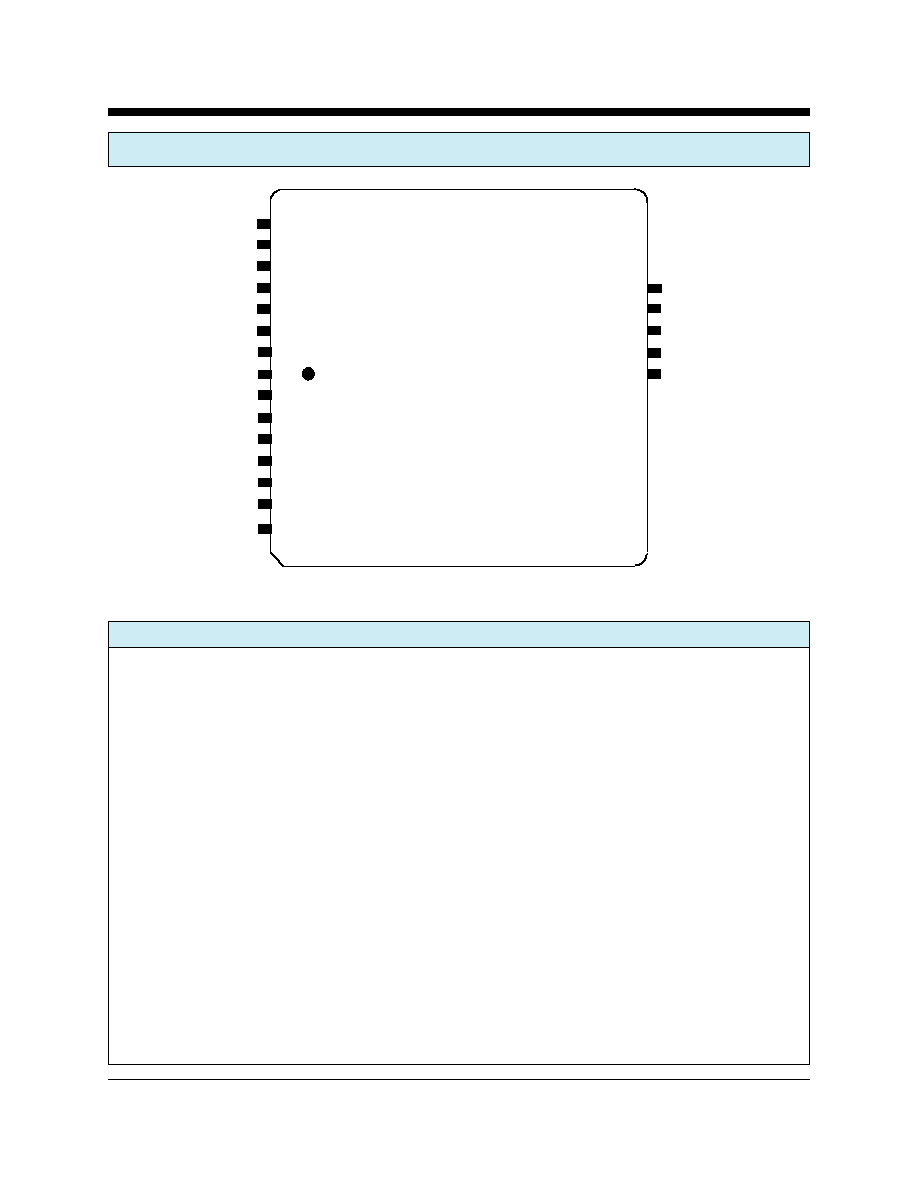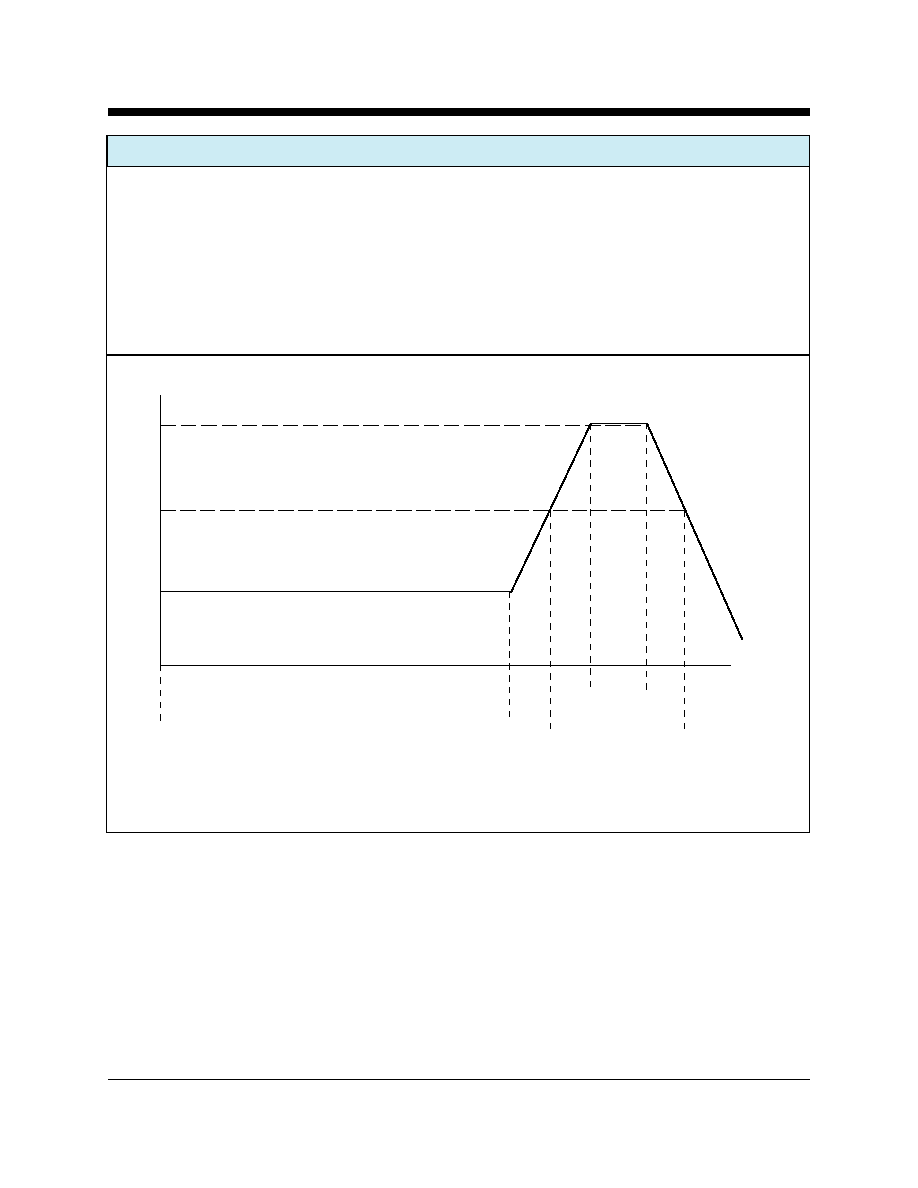
XECOM
(1)
XE5620G
XE5620G
September 2003
Smallest World-Wide 56 KBPS Modem
Description
Xecom's XE5620G simplifies integration of dial-up
communications into embedded systems. It offers a
single modem solution for use throughout the world,
and its PLCC package allows the XE5620G to fit in the
tightest system layout. It is a breakthrough for the
embedded system designer.
The XE5620G offers unprecidented design flexibility.
It offers a common communications solution for
countries around the world, and the Hybrid PLCC
package (HyPLCCTM) is both the smallest complete
modem and the only surface mount modem you can
buy. The XE5620G fits a 68-Pin PLCC socket and
therefore can be mounted in a socket or soldered onto
the board. As the world's smallest complete modem,
you can place the XE5620G where no other modem
will fit.
The surface mount package and small size of the
XE5620G are particularly impressive when you realize
it is a complete modem. The DAA, RAM, ROM,
Crystal; everything is included. The XE5620G even
includes transferrable FCC Part 68 Registration. No
further testing is required for US applications
Features
* Small Size: The HyPLCCTM measures less than 1 inch
by 1 inch square and 0.350 inches thick
* Surface-mountable: The HyPLCCTM package is
equivalent to a 68-Pin PLCC device.
* Data transfer at all rates from 300 BPS to 56 KBPS
using V.90, V.34bis, V.34, V.32bis, V.32, V.22bis, V.22,
V.23, V.21, Bell 212A, and Bell 103 Protocols
* Modem Control and Configuration via industry
standard AT Commands.
* Supports V.42 error correction and V.42bis data
compression.
* Nonvolatile memory stores modem configuration and
permits stored number dialing.
* Incorporates Fax send and receive capabilities
controlled by Class 1 Fax commands.
* Complete integrated DAA includes, Ring Detect,
Loop Current Holding Circuit, Hook Switch. Metallic
Surge Protection, and Solid-State DAA
* User Transferrable FCC Part 68 Registration
* Complies with telephone networks around the world.
* UL60950 Recognition
* Low Power operation, 3.3 Volts, 300 milliwatt;
XE5620G BLOCK DIAGRAM
Modem
Controller
R
O
M
Analog
Front
End
Global
Telephone
Line
Interface
(DAA)
Tip
Ring
/Reset
/TXD
/RXD
/RTS
/DSR
/DCD
/CTS
/DTR
/RI
SPKR
NVRAM

XECOM
(2)
XE5620G
XE5620G Mechanical Specifications
a
b
c
d
c
f
g
e
e
45
O
i
(TOP)
Inches
Millimeters
Dimension
Min
Typ
Max
Min
Typ
Max
a
0.345
0.350
0.355
8.76
8.89
9.02
b
0.985
0.990
0.995
25.02
25.15
25.27
c
0.950
0.955
0.960
24.13
24.26
24.38
d
0.910
0.920
0.930
23.11
23.37
23.62
e
0.045
0.050
0.055
1.15
1.27
1.40
f
0.695
0.700
0.705
17.65
17.78
17.91
g
0.195
0.200
0.205
10.03
10.16
10.29
i(radius)
0.015
0.020
0.025
0.13
0.25
0.38
i
i
.050"

XECOM
(3)
XE5620G
XE5620G Pin Configuration
Pin Descriptions
PIN NAME
DESCRIPTION
1
/DCD
/DCD is an active low output from the modem. It can be used to indicate the presence of a
valid carrier signal. The AT&C command controls when the XE5620G asserts /DCD.
2
/CTS
/CTS is an active low output from the modem. When hardware flow control is active, the
modem asserts /CTS to indicate that it can accept data from the terminal equipment on /TXD.
3
/RESET
/RESET is an active low input which initiates a modem hardware reset. /RESET must be active for
a minimum of 100 milliseconds for a proper modem reset sequence. No external reset is required;
if none is used the /RESET signal should be left open.
4
/DSR
/DSR is an active low output from the modem. /DSR can be used to indicate that the modem
link is established. The AT&S command controls when the XE5620G asserts /DSR.
5
/RTS
/RTS is an active low input to the modem. When hardware flow control is active, /RTS indicates
to the modem that the host has data to send.
6
/DTR
/DTR is an active low input to the modem. /DTR can be used to indicate that the terminal is
availble for communications. The AT&D command determines how the modem will interpret
activity on /DTR.
7
/RXD
/RXD provides the path for received data and modem responses to be sent from the modem to
the host terminal equipment.
/DCD
1
/CTS
2
/RESET
3
/DSR
4
24
RING
/RTS
5
23
N/C
/DTR
6
22
TIP
/RXD
7
21
N/C
/TXD
8
20
N/C
/RI
9
19
NP
GND
10
18
NP
SPKR
11
17
NP
N/C
12
16
NP
N/C
13
Vcc
14
N/C
15
TOP

XECOM
(4)
XE5620G
8
/TXD
/TXD provides the path for transmitted data and modem commands to be passed from the host
terminal equipment to the modem.
9
/RI
The /RI signal reports on the presence of an incoming ring signal. When a ring occurs across
Tip and Ring, the /RI output goes low and toggles with the cadence of the ring signal..
10
Ground
Ground provides the reference voltage for all host interface signals.
11
SPKR
SPKR allows connection of a speaker to monitor modem operations. SPKR cannot directly
drive a speaker. An amplifier with a minimum input impedance of 300 ohms is required. The
signal on SPKR is controlled by the ATL and ATM commands.
12-13
N/C
No internal connection
14
VCC
VCC provides 3.3 volt power to the modem.
15
N/C
No Internal Connection
16-19
NP
No Pin
20-21
N/C
No Internal Connection
22
Tip
The Ring and Tip signals provide modem the connection to the telephone line. FCC Part 68
Rules require a 1500 volt isolation barrier between the telephone line and all other circuits.
This isolation must be preserved throughout the system.
The telephone company places a DC "Battery" voltage across Tip and Ring on all public switched
telephone lines. The XE5620G will operate regardless of the polarity of this "Battery" voltage.
The "Battery" voltage drives up to 100 milliamps of DC loop current.
UL60950 requires minimum creepage and clearances distances be maintained between the
Tip and Ring traces and all other circuits. Clearance is the shortest distance between conductive
circuits; creepage is the distance between conductive surfaces along the surface
23
N/C
No internal connection, To prevent damage in case of voltage surges on the telephone line, we
recommend that nothing be connected to this pin.
24
Ring
The Ring and Tip signals provide modem the connection to the telephone line. FCC Part 68
Rules require a 1500 volt isolation barrier between the telephone line and all other circuits.
This isolation must be preserved throughout the system.
The telephone company places a DC "Battery" voltage across Tip and Ring on all public switched
telephone lines. The XE5620G will operate regardless of the polarity of this "Battery" voltage.
The "Battery" voltage drives up to 100 milliamps of DC loop current.
UL60950 requires minimum creepage and clearances distances be maintained between the
Tip and Ring traces and all other circuits. Clearance is the shortest distance between conductive
circuits; creepage is the distance between conductive surfaces along the surface.
XE5620G Pin Descriptions (continued)
PIN NAME
DESCRIPTION

XECOM
(5)
XE5620G
XE5620G Soldering Instructions
The XE5620G is subject to damage if over-exposed to heat during solder reflow operations. Following the
soldering instructions below will ensure that the process of soldering the module to the board does not damage
the modem. The XE5620G must not be exposed to direct Infrared (IR) heating. If your process includes direct
IR heating, you must shield the XE5620G from the infrared rays.
Maximum Temperature
220
O
C
Maximum Time at 220
O
C
20 Seconds
Maximum Time above Eutectic (180
O
C)
90 Seconds
Maximum Preheat Dwell Time
180 Seconds
Maximum Recommended Solder Temperature Profile
220
O
C
180
O
C
150
O
C
-20 sec-
--------------------------------180 sec max ---------------------
max
----- 90 sec max -----




